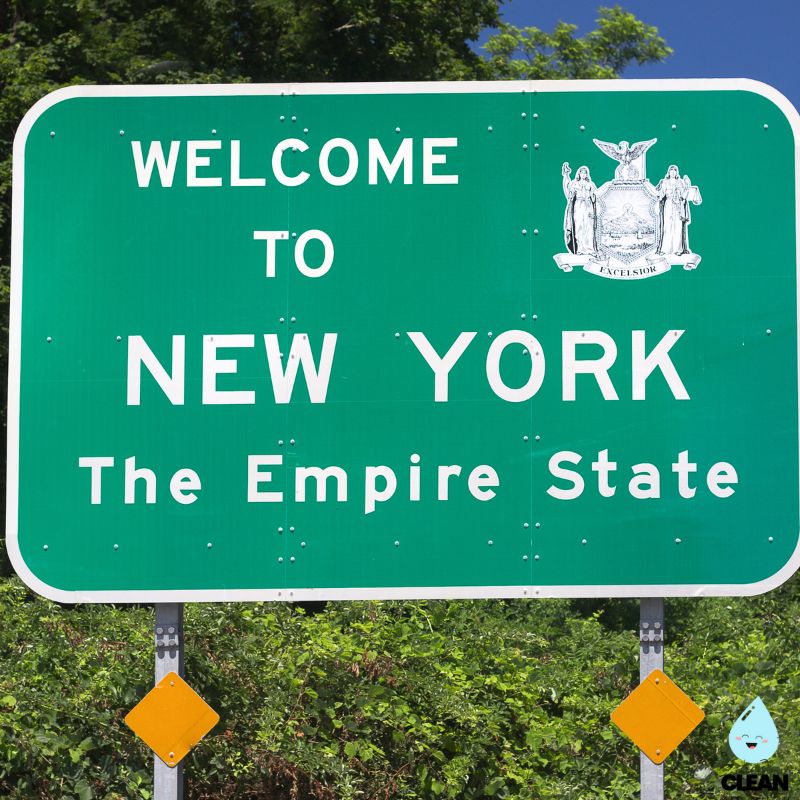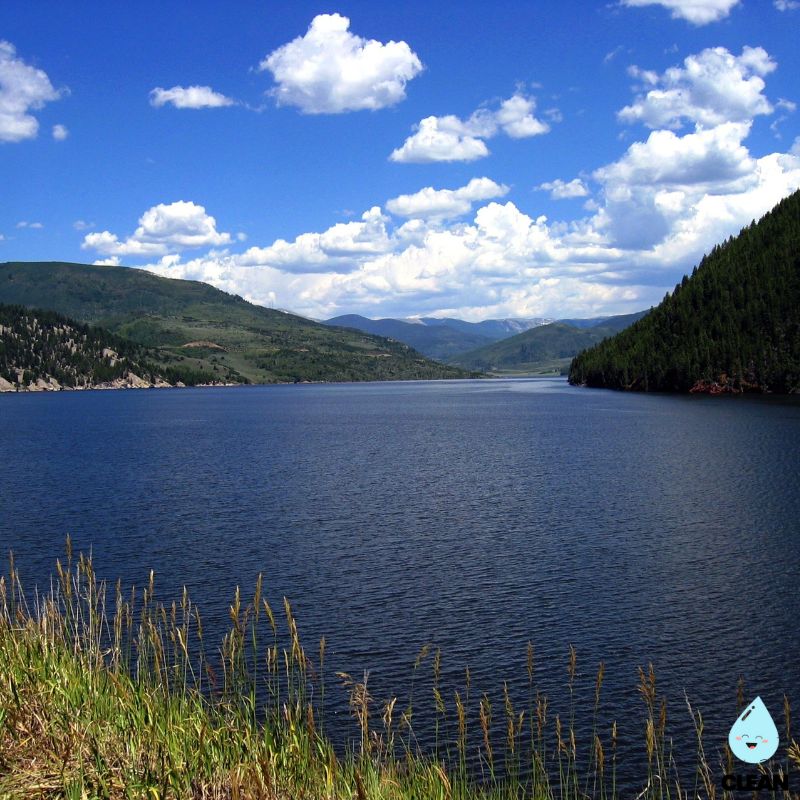New York Water Quality at a Glance
significant regional issues
Is New York Water Safe to Drink?
Highly Variable Quality Across State – NYC enjoys some of the world’s best tap water from protected upstate watersheds, but other regions face serious challenges. 1.3 million New Yorkers exposed to PFAS contamination, with Long Island particularly affected by nitrogen pollution from septic systems and agricultural runoff. Rural areas show elevated nitrates in 15.7% of wells tested. Lead service lines remain a concern in older buildings statewide.
⚠️ Key Concerns for New York Residents
- Long Island Crisis: Over 600,000 residents exposed to PFAS above EPA standards; widespread nitrogen pollution from 380,000 septic systems threatening groundwater
- Statewide PFAS: 189 water systems serving 1.3M people detected PFAS between 4-10 ppt; 250 systems exceed state limits of 10 ppt
- Rural Contamination: 15.7% of farm wells exceed nitrate limits of 10 mg/L; agricultural runoff affecting shallow wells and springs
- Lead Concerns: Pre-1961 homes may have lead service lines; older buildings with lead plumbing pose exposure risks statewide
Read the full report below for detailed analysis, regional-specific data, and actionable recommendations for New York residents.
New York – The Empire State – Water Quality Report 2025: PFAS Testing, Infrastructure Concerns & Safety across your state
New York’s water infrastructure serves approximately 19.5 million residents across diverse geographical regions, from the Adirondack Mountains in the north to Long Island Sound in the south. The state operates through a complex network of over 9,000 public water systems, ranging from New York City’s massive unfiltered system serving 8.3 million customers to smaller rural systems providing essential services to underserved communities. New York’s water sources include the Great Lakes, Hudson River, Finger Lakes, and numerous reservoirs and groundwater aquifers that supply both urban centers and agricultural areas.
Despite abundant water resources, New York faces significant infrastructure challenges. According to the American Society of Civil Engineers’ 2022 Infrastructure Report Card, New York’s drinking water infrastructure received a C- grade, highlighting aging systems with some pipes over 100 years old, funding shortfalls, and emerging contaminant concerns including PFAS “forever chemicals.” The state has received over $450 million in federal infrastructure investments from the Biden-Harris Administration’s Bipartisan Infrastructure Law to address these challenges, focusing on drinking water safety, wastewater treatment upgrades, and emerging contaminant removal. New York’s commitment to water quality improvement is demonstrated through partnerships between the New York State Department of Environmental Conservation (DEC), Department of Health (DOH), local utilities, and federal agencies working to ensure safe, reliable water access for all residents.

New York Water Quality: Current Status (2024-2025)
Statewide Compliance and Testing
- Overall Compliance: Nearly 95% of New York’s public water systems meet federal Safe Drinking Water Act standards, though approximately 189 systems are expected to exceed new EPA PFAS limits requiring treatment upgrades by 2031 following EPA’s recent extension of compliance deadlines.
- PFAS Monitoring: Approximately 189 New York public water systems serving over 1.3 million people have detected PFAS between 4-10 parts per trillion that will require action under new federal limits, while about 250 systems have exceeded the state’s PFOA and PFOS drinking water standards of 10 parts per trillion.
- Infrastructure Investment: Over $450 million in federal funding through the Bipartisan Infrastructure Law has been allocated to New York for water infrastructure improvements, including $35.6 million specifically for emerging contaminants and $274.6 million for clean water projects.
Major Water Sources and Challenges
- New York City System: The largest unfiltered water system in the US serves 8.3 million customers from upstate reservoirs, with minimal PFAS contamination but ongoing monitoring of the Croton System where trace levels have been detected below state limits.
- Long Island Aquifers: Heavily impacted by legacy contamination including PFAS from industrial sources and airports, requiring extensive treatment and monitoring programs to protect groundwater supplies for millions of residents.
- Aging Infrastructure: With some distribution systems over 100 years old, New York faces a $44.2 billion need for drinking water infrastructure improvements over the next 20 years, far exceeding current funding levels.
Emerging Contaminant Response
- PFAS Regulation Implementation: New EPA drinking water standards for PFOA and PFOS (4 parts per trillion) are expected to take effect in 2031 following EPA’s proposed extension, requiring over $1 billion in treatment technology investments from affected water systems across the state. EPA has announced plans to rescind standards for four additional PFAS compounds and reconsider their regulatory determinations.
- State Leadership: New York was among the first states to establish drinking water standards for PFOA and PFOS (10 ppt) in 2020 and for 1,4-dioxane (1 ppb), providing a framework for other states to follow.
- Comprehensive Monitoring: Public water systems must monitor for over 100 contaminants including PFAS, with requirements to report all detected levels and implement treatment when standards are exceeded.
Rural and Disadvantaged Communities
- Infrastructure Disparities: Small and medium-sized communities face challenges accessing state funding, with only 18% of $4 billion appropriated since 2015 reaching communities due to complex application processes and upfront costs.
- Targeted Federal Support: The Bipartisan Infrastructure Law mandates that majority funding goes to disadvantaged communities through grants and forgivable loans, with enhanced technical assistance programs to navigate regulatory requirements.
- Private Well Concerns: Approximately 2 million New Yorkers rely on private wells that are not federally regulated, leaving many residents without knowledge of PFAS or other contaminant levels in their drinking water.
Looking Forward: 2025-2030
New York’s water quality landscape is undergoing significant transformation as utilities prepare for new federal PFAS regulations taking effect in 2031. The state’s early adoption of PFAS standards and comprehensive monitoring programs positions New York as a leader in addressing emerging water quality challenges. However, successful implementation will require sustained investment exceeding $44 billion over 20 years to modernize aging infrastructure while ensuring all New Yorkers have access to safe, affordable drinking water. The state’s commitment to a $500 million clean water funding commitment as part of Governor Hochul’s 2025 State of the State, bringing total investment to a record $6 billion, demonstrates continued prioritization of water quality protection and infrastructure resilience.
Recommendations for New York Residents

Know Your Water Source
Contact your water utility to request annual water quality reports and ask about PFAS testing results. Visit the New York State Department of Health’s website to access your local system’s testing data and understand any contaminants of concern in your area.

Support Infrastructure Investment
Stay informed about local water infrastructure needs and support utility rate structures that enable necessary improvements. Attend public hearings when utilities discuss infrastructure upgrades and PFAS treatment investments to ensure community voices are heard.

Consider PFAS-Certified Filtration
For areas with known PFAS contamination, consider NSF-certified activated carbon or reverse osmosis filters specifically tested for PFAS removal. These can provide additional protection while utilities implement treatment upgrades to meet new federal standards.

Report Water Quality Concerns
Contact your local water utility immediately for taste, odor, or color concerns. Report suspected contamination to the New York State Department of Health or DEC for investigation and follow-up, especially for private well users.

Practice Water Conservation
Support New York’s water sustainability by implementing conservation measures like efficient irrigation, rainwater harvesting, and low-flow fixtures. Reducing demand helps utilities maintain system reliability and affordability while protecting precious water resources.
New York Cities We Cover
Buffalo Water Quality
Comprehensive analysis of Buffalo Water System, serving over 280,000 customers in Western New York. Includes information on Great Lakes water sources, treatment processes, infrastructure modernization, and PFAS monitoring programs.
New York City Water Quality
Detailed assessment of New York City’s Department of Environmental Protection systems, covering the world’s largest unfiltered water supply serving 8.3 million customers, reservoir management, and compliance with emerging contaminant regulations.
Rochester Water Quality
Analysis of Rochester’s Water and Lighting Bureau systems, covering Lake Ontario water intake, treatment processes, distribution infrastructure, and ongoing improvements to address aging systems and emerging contaminants.
Frequently Asked Questions
Is New York’s tap water safe to drink?
Nearly 95% of New York’s public water systems meet federal drinking water standards and are safe for consumption. However, some areas have elevated PFAS levels that exceed new EPA guidelines.
The New York State Department of Health requires comprehensive testing across all 9,000+ public water systems. About 189 systems are expected to need additional treatment to address PFAS contamination under new federal limits. Water utilities are implementing advanced treatment technologies and the state has received over $450 million in federal funding to address emerging contaminants and infrastructure needs. Residents should review their utility’s annual water quality report and stay informed about local conditions.
What are PFAS chemicals and why are they a concern in New York?
PFAS (per- and polyfluoroalkyl substances) are synthetic “forever chemicals” that don’t break down naturally in the environment or human body.
Approximately 189 New York public water systems serving over 1.3 million people have detected PFAS contamination between 4-10 parts per trillion, with about 250 systems exceeding state standards. These chemicals have been linked to cancer, liver damage, immune system effects, and other health concerns. The EPA finalized new drinking water standards in 2024 limiting PFOA and PFOS to 4 parts per trillion, with implementation now extended to 2031. New York was among the first states to establish its own PFAS standards in 2020 and continues to lead in monitoring and treatment efforts.
How can I find out about my local water quality?
New York residents can access comprehensive water quality information through several resources:
• Annual Water Quality Reports: Contact your water utility directly for their Consumer Confidence Report, which details all testing results and any violations or concerns
• NYS DOH Water Quality Portal: Visit the New York State Department of Health’s online database to access testing results and compliance information for your local water system
• PFAS Testing Data: NYS requires all public water systems to test for PFAS and makes results publicly available through annual reports and online databases
• Private Well Testing: Private well owners can contact local health departments for testing resources and guidance on interpreting results
Why does New York have water infrastructure challenges?
New York’s water infrastructure faces several interconnected challenges:
Aging Systems: Many water systems were built decades ago, with some distribution pipes over 100 years old, requiring modernization to meet current standards and handle emerging contaminants
Funding Gaps: The state faces a $44.2 billion need for drinking water infrastructure over 20 years, but funding has only grown at the rate of inflation with most proposed improvements going unfunded
Access Barriers: Small and medium communities struggle to access state funding, with complex application processes and upfront costs preventing many from obtaining necessary improvements
Emerging Contaminants: New regulations for PFAS and other contaminants require expensive treatment technologies that strain utility budgets and ratepayer costs
The state is addressing these challenges through record investments including a $500 million clean water commitment, federal infrastructure funding, and simplified grant processes to ensure equitable access to improvement resources.
Quality News About Your Water
Get the comprehensive water quality news coverage you need with our dedicated US Water News Service. From coast to coast, we deliver in-depth reporting and expert analysis on PFAS contamination, EPA regulatory changes, infrastructure developments, and emerging water safety issues affecting communities nationwide. While mainstream media only covers the biggest stories, we provide the detailed, ongoing coverage that helps you understand the full scope of America’s water challenges. Whether you’re a concerned citizen, water professional, or community leader, our daily updates and analytical insights keep you informed about the issues that matter most to public health and environmental safety.
Contaminants of Concern

PFAS “Forever Chemicals”
Source: Industrial manufacturing, firefighting foam use at airports and military installations, consumer products including non-stick cookware and stain-resistant textiles, landfill leachate, and wastewater treatment plant discharges
Health Effects: Linked to kidney and testicular cancer, liver damage, immune system suppression, high cholesterol, thyroid disease, and developmental effects in children
Current Status: Approximately 189 New York water systems serving over 1.3 million people have detected PFAS between 4-10 parts per trillion, requiring treatment upgrades by 2031 following EPA’s extension of compliance deadlines. EPA has announced plans to rescind standards for four additional PFAS compounds. EPA Limits: 4 ppt for PFOA and PFOS individually

Lead Service Lines
Source: Legacy lead pipes and service lines installed before 1986, particularly in older urban areas and buildings, with corrosion and acidic water conditions accelerating lead leaching into drinking water
Health Effects: Neurological damage, developmental delays in children, cardiovascular effects, kidney damage, and cognitive impairment, with no safe level of lead exposure established
Current Status: New York has received federal funding for lead service line replacement programs, with enhanced EPA guidance prioritizing disadvantaged communities and schools for replacement projects Action Level: 15 parts per billion in tap water triggers treatment requirements and public notification
Please read – our information
The information presented on cleanairandwater.net is compiled from official water quality reports, trusted news sources, government websites, and public health resources. While we strive for accuracy and thoroughness in our presentations, we are not scientists, engineers, or qualified water quality professionals.
Our mission is to present water quality information in an accessible, real-world format that helps people understand what’s in their water and make informed decisions about their health and safety. We believe that complex environmental information should be available to everyone in a format that’s easy to understand.
We make every effort to ensure our content is current and accurate, but we cannot guarantee that all information is complete or error-free. This website should not replace official communications from your local water utility or health department. We always recommend consulting official sources for the most up-to-date information regarding your specific water system.
Clean Air and Water is not liable for any unintentional errors, omissions, or outdated information. The content on this site is provided for informational purposes only and should not be considered professional advice.


